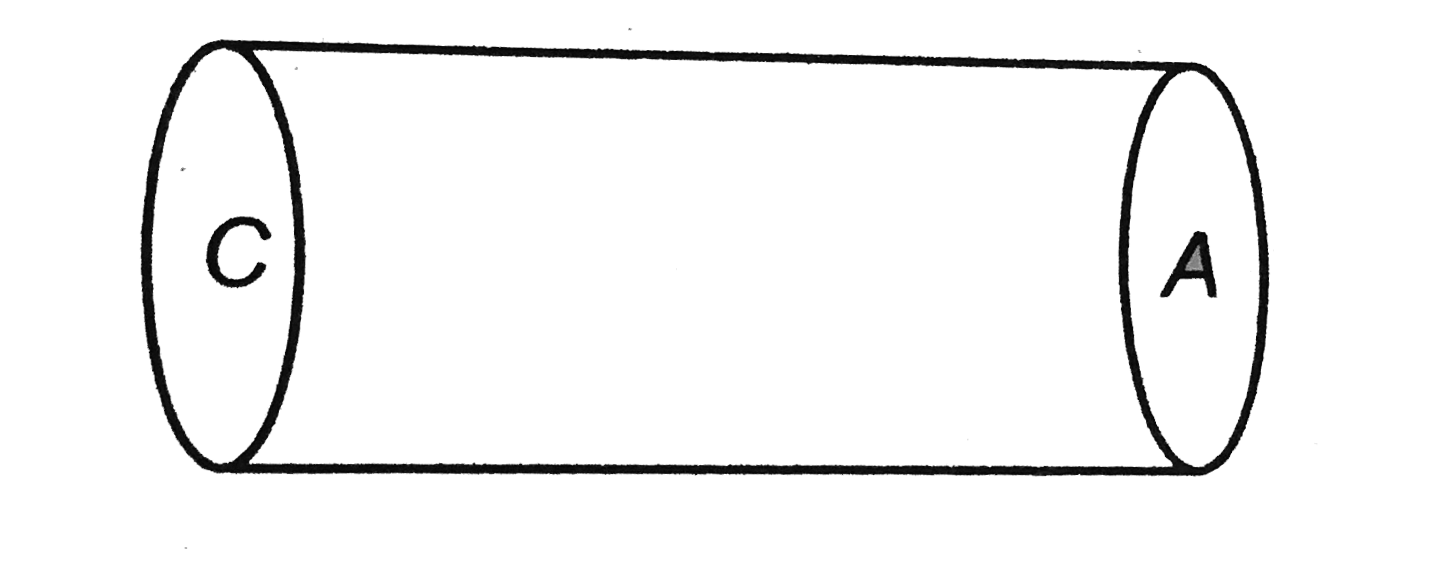Units of electric flux are
N-m2C
NC−m2
Volt-m
Volt-m3
The correct Answer is:A, C
To determine the units of electric flux, we can start from the definition of electric flux and the relationship between electric field and area.
1. Definition of Electric Flux:
Electric flux (Φ) is defined as the product of the electric field (E) and the area (A) through which the field lines pass. Mathematically, it is expressed as:
Φ=E⋅A
2. Units of Electric Field:
The electric field (E) can be defined in terms of force (F) and charge (q):
E=Fq
The SI unit of force (F) is Newton (N), and the SI unit of charge (q) is Coulomb (C). Therefore, the units of electric field (E) are:
(E)=NC
3. Units of Area:
The SI unit of area (A) is square meter (m²).
4. Combining Units for Electric Flux:
Now, substituting the units of electric field and area into the equation for electric flux:
(Φ)=(E)⋅(A)=(NC)⋅(m2)=N⋅m2C
5. Alternative Expression for Electric Field:
Electric field can also be expressed in terms of electric potential (V) and distance (L):
E=VL
Here, V is measured in volts (V) and L in meters (m). Thus, substituting this into the electric flux formula gives:
Φ=E⋅A=(VL)⋅A
The units of electric potential (V) are volts (V), and the area (A) is in square meters (m²). Therefore, we can express the units of electric flux as:
(Φ)=(Vm)⋅(m2)=V⋅m
6. Final Units of Electric Flux:
From the two approaches, we find that the units of electric flux can be expressed as:
(Φ)=N⋅m2Cor(Φ)=V⋅m
Conclusion:
The units of electric flux are N⋅m2C and V⋅m.
Electric flux (Φ) is defined as the product of the electric field (E) and the area (A) through which the field lines pass. Mathematically, it is expressed as:
Φ=E⋅A
The electric field (E) can be defined in terms of force (F) and charge (q):
E=Fq
The SI unit of force (F) is Newton (N), and the SI unit of charge (q) is Coulomb (C). Therefore, the units of electric field (E) are:
(E)=NC
The SI unit of area (A) is square meter (m²).
Now, substituting the units of electric field and area into the equation for electric flux:
(Φ)=(E)⋅(A)=(NC)⋅(m2)=N⋅m2C
Electric field can also be expressed in terms of electric potential (V) and distance (L):
E=VL
Here, V is measured in volts (V) and L in meters (m). Thus, substituting this into the electric flux formula gives:
Φ=E⋅A=(VL)⋅A
The units of electric potential (V) are volts (V), and the area (A) is in square meters (m²). Therefore, we can express the units of electric flux as:
(Φ)=(Vm)⋅(m2)=V⋅m
From the two approaches, we find that the units of electric flux can be expressed as:
(Φ)=N⋅m2Cor(Φ)=V⋅m
The units of electric flux are N⋅m2C and V⋅m.
Similar Questions
The law goverening electrostatics is coulomb's law.In priciple coulomb's law can be used to compute electric field due to any charge configuation .In pracitce however it is a formidable task to compute electric field due to uniform charge distributions .For such cases Gauss proposed a theorem which states that
∮¯¯¯E.¯¯¯¯ds=qε0
where ds is an element of area directed across the outward normal for the surface at every point .The integral is called electric flux.Any convenient surface that we choose to evalute the surface integral is called the Gaussian surface.
The SI unit of electric flux is
View SolutionAssertion Magnetic flux and the electric flux have the same units.
Reason Flux passing throught a surface gives an idea about the field lines crossing that surface
View Solution
Knowledge Check
The SI unit of electric flux is
ANC−1m2BNCm−2CNC−2m2DNC−1m−2
The unit of electric field is not equivalent to
View SolutionThe SI unit of electric field intensity is
View SolutionUnit of electric power may also be expressed as :
View SolutionDefine electric flux. Write its SI unit. A charge q is enclosed by a spherical surface of radius R. If the radius is reduced to half, how would the electric flux through the surface change ?
View SolutionA hollow cylinder has a charge qC within it. If ϕ is the electric flux in unit of voltmeter associated with the curved surface B the flux linked with the plane surface A in unit of voltmeter will be

View SolutionA hollow cylinder has a charge qC within it. If ϕ is the electric flux in unit of voltmeter associated with the curved surface B the flux linked with the plance surface A in unit of voltmeter will be

View SolutionAn arbitrary surface encloses a dipole. What is the electric flux through this surface ?
View Solution
